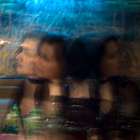ekip Policy Lab: Keynote
Posted June 11, 2025 by Maja KuzmanovićSome thought experiments for innovation with(in) performing arts
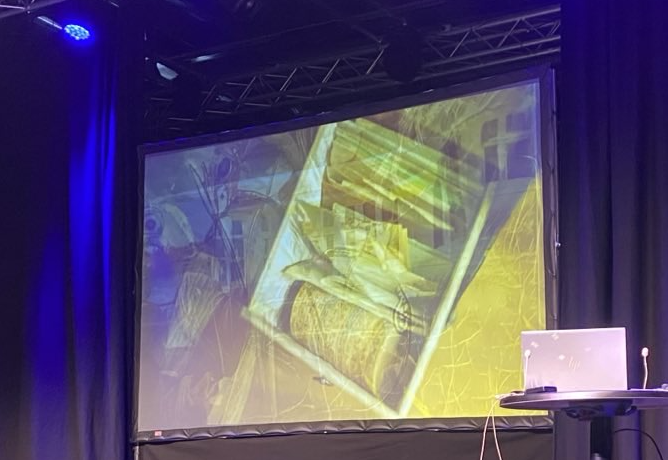
ekip Policy Lab #7 in Lund, Sweden, June 2025.
Innovation aspires to create radical change, to shape the future using the tools of the present. It can foster a sense of agency, but also demands responsibility. Single issue solutions in one field can create unintended consequences for others. Innovators can perpetuate unsustainable lifestyles and social injustices, without necessarily being aware of it. That’s why cross-innovation, innovation ecosystems and other forms of collaboration across sectors are crucial.
I first became aware of the benefits and drawbacks of transdisciplinary collaborations while studying design forecasting and interactive media. Both these fields are based on in-breadth research and development, where the most interesting, innovative insights come from the gaps between knowledges and ways of working. From my early career as an artist in research institutes to establishing the FoAM network, my mission has been to dissolve borders between art, science, nature and everyday life – into semi-permeable edges.
Learning to navigate multiple, asynchronous, sometimes disjointed conversations and points of view is a vital skill for collaborating across sectors. Premonitions in one, echoes for another. In transdisciplinary innovation, there are always several ways of seeing, hearing and understanding what’s in front of us. One of my key insights from working across sectors is the importance of translating assumptions into hypotheses, then testing them out in real life experiments.
By scanning through FoAM’s work, I gleaned a few hypotheses concerning cross-innovation with/in performing arts and formulated them as thought experiments, to act as scattered seeds for further conversations.
Thought Experiment #1
Performing arts and technology
Contemporary urban public spaces are becoming more computationally augmented. Billboards, geotagged locations, and other extended reality applications. Digital technology in these settings is mostly representational. It’s intended primarily for advertising, providing information, or navigational cues. Even though computers are often used to represent content, they are performance machines. They execute scripts, act on prompts. Also, computers are increasingly capable of learning from and responding to the world they’re embedded in. If we move from technologies that maintain representations of society to performing socially, we could gain more supple and subtle ways of building and inhabiting settings for public activity. Augmented or immersive spaces that are shaped by accidental encounters. Interfaces that stimulate social cohesion through accidental, ordinary gestures. Buildings that translate environmental forces into new perceptual experiences...
What if we moved from technologies of representation to systems for performance?
- What would it look like if public spaces were more responsive to their inhabitants?
- What would it feel like to have our habitual gestures ripple through public spaces?
- What if our effect on the environment would be reflected back at us, in real time?
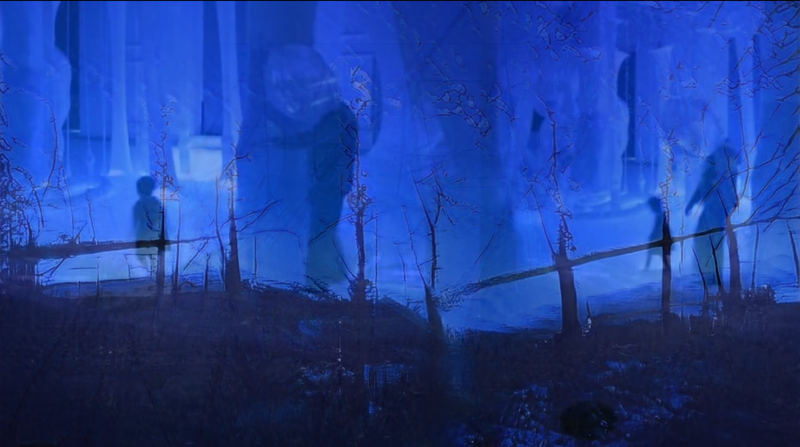
Thought Experiment #2
Performing arts and the environment
We often hear that facts and data aren’t enough to change behaviours or mitigate the extent of climate change. Performing arts have a deep arsenal of approaches to bring to pressing environmental concerns. Body weather, Theatre of Cruelty, Theatre of the Oppressed, Relational Art, Artivism, are but a few examples of engaging with our audiences and their environment. These encounters often happen outside of traditional performing arts venues, stretching the ideas of what a performance, its public and its venues might be. If “All the world's a stage”, and this stage is on the brink of collapse, performing artists can lead by example, embodying other ways of engaging with the world and its turbulences.
Attuning, for example, demands bodily engagement rather than detachment. It suggests a willingness to be touched by external circumstances, to be lured, affected, and changed by them. Attuning is a deliberately hesitant engagement with other entities on their own terms; from quivering butterfly wings to earth-shattering volcanoes. It cultivates a form of “ecological intimacy”.
How do we attune to environmental breakdown?
- What do our bodies know that we cannot put into words?
- How do we attune to something that could consume us completely? A virus, a wildfire, the relentless passage of time...
- How would we engage with the world in which all is animate?
- Attuned to the changes in our surroundings, how do we act?
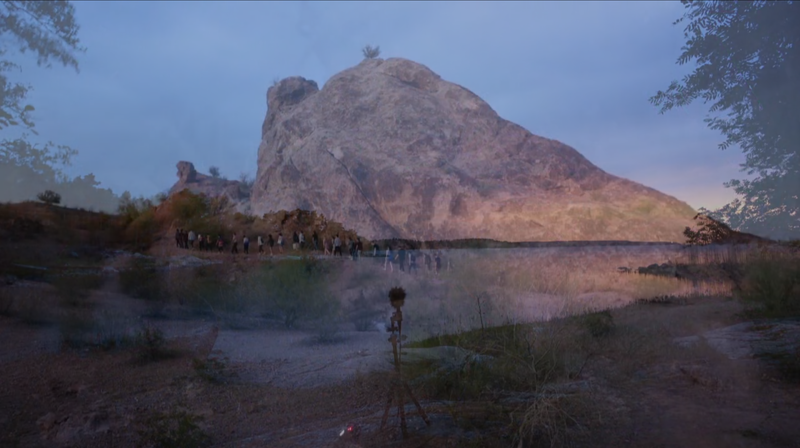
Thought Experiment #3
Performing arts and decision making
Changing focus from bodies to cultures... Innovation is needed at the societal level to prevent, or at least manage, our species’ decline. Institutions, corporations, infrastructures, and worldviews that underpin our everyday actions. Changing the course of these behemoths requires the energy of multitudes. It requires breaking the fourth wall. It requires thinking not just out-of-the-box, but also about the box. Through participation, collaboration, improvisation. These are essential, adaptive skillsets for performing artists and decision makers alike. Where do we learn and share these skills with people from all walks of life? Participatory formats – like workshops and street festivals – can provide convivial and familiar settings for consulting ‘everyday experts’. All of us who live and work with the consequences of institutional policies and technological infrastructures.
Against a backdrop of failing public confidence, the craft of hosting, nurturing and re-imagination becomes a critical survival skill.
What can institutions learn from improvisation?
- What would happen if “Yes, and...” replaces “not possible” and “yes, but...” in participatory democracy?
- If European legislation is our mise-en-scène, what speech-acts become possible?
- What if we move the backstage roles of business, management and administration to centre stage?
- How do we survive well together?
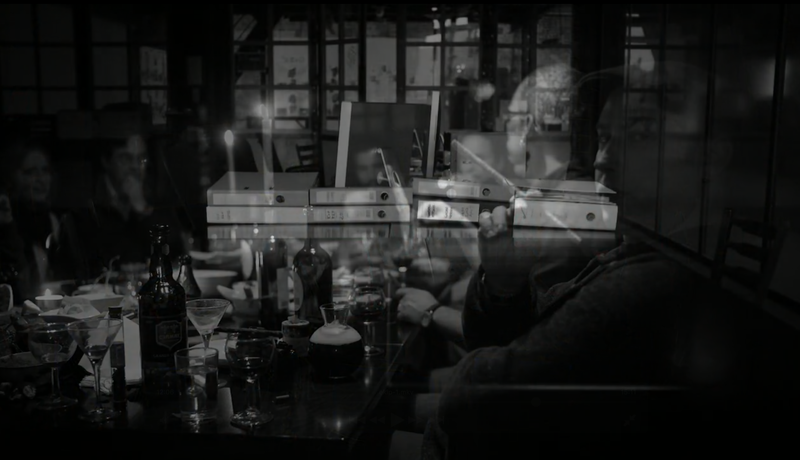
Thought Experiment #4
Performing arts and care
Sometimes, the most innovative thing we can do is to not do anything at all. Weathering transience occasionally requires not intervening but staying, witnessing, caring. Helping cope, regardless of the situation. Rituals and ceremonies, as some of the earliest forms of performing arts, can offer solace in social upheavals and existential crises. Both ritual and performance can transform lives in ways that are much more subtle than transformation through innovation. They can contribute to a sense of belonging to something larger and amplify social connections we all need when going through hard times. In a fragmented world, performative rituals can remind us of our fundamental interconnection with everyone and everything else.
What might secular rituals for the age of extinction look like?
- How do we touch the grief of a whole species, feel the loss of a last specimen?
- Where can we create sanctuaries for endangered cultural phenomena? For those across political divides?
- Do you care? How do you care?

Thought Experiment #5
Performing arts and futures
When contending with contemporary forces of change – from climate to politics – scientific modernity might benefit from a rewilding of its techno-materialist tenets. There might be some other ways of thinking about and being in the world that could help navigate the complexities and uncertainties of our time. Prefiguring possible futures could be one. A space where “what if?” questions become manifest in immersive “as if” situations, engaging all human senses and training our anticipatory reflexes. At FoAM we call these situations prehearsals, pre-enactments and physical narratives. To design such situations, we can lean on the arts of improvisation. Simultaneously spontaneous and strategic, improvisation incorporates discussion and representation, wrapping stories in embodied experiences. It can prepare us to “stay with the trouble”, whatever it happens to be.
How do we prefigure and rehearse life for many possible futures?
- What would a rehearsal space for enactments of the possible look like?
- How would you apply embodied foresight in your life and work?
- How do you grow your own worlds?
Growing your own worlds does not imply constructing your own realities or building echo chambers, conspiring with some to the exclusion of others. Instead, it is about engaging with everyday realities as one might a garden or an improv exercise. Always attentive, never in control. Embroiled, entangled, involved.

Created: 11 Jun 2025 / Updated: 11 Jun 2025



